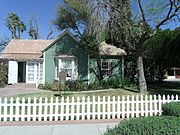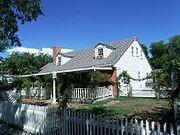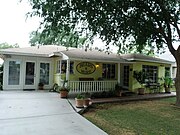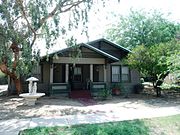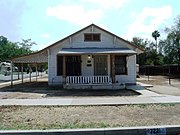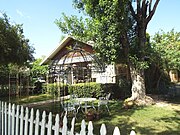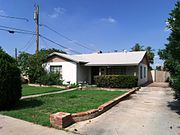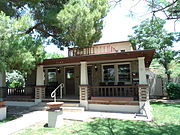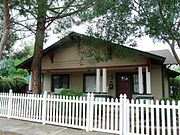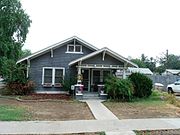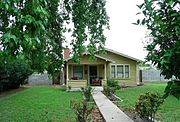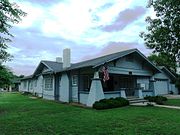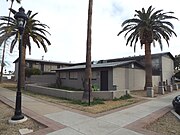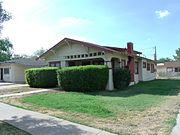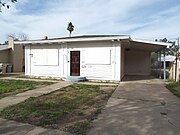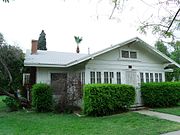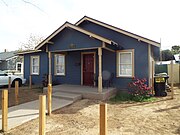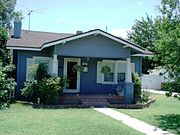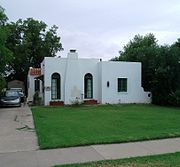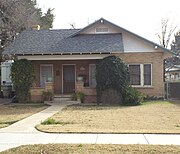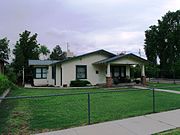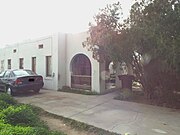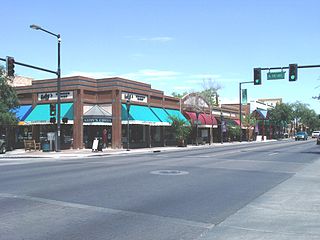
Glendale is a city in Maricopa County, Arizona, United States, located approximately 9 miles (14 km) northwest of Downtown Phoenix. As of the 2020 census, it had a population of 248,325.

Myrtle Avenue is a 8.1-mile-long (13.0 km) street that runs from Duffield Street in Downtown Brooklyn to Jamaica Avenue in Richmond Hill, Queens, in New York City, United States.
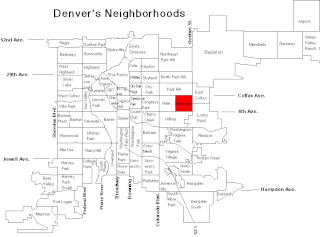
Montclair is a neighborhood in the City and County of Denver, Colorado, United States. The Denver U.S. Post Office serves Montclair postal addresses.
Winnona Park is a historic area in the southeast corner of the Atlanta, Georgia suburb of Decatur. It is listed as a historic district on the National Register of Historic Places, but it is not one of the City of Decatur's locally designated historic districts.

The Sunnyslope community is an established neighborhood within the borders of the city of Phoenix, Arizona. The geographic boundaries are 19th Avenue to the west, Cactus Road to the north, 16th Street to the east, and Northern Avenue to the south. This area covers approximately nine square miles and is divided into nine census tracts. The Sunnyslope community is included in parts of three zip code areas: 85020, 85021 and 85029.
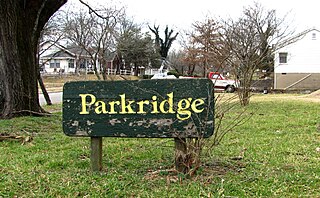
Parkridge is a neighborhood in Knoxville, Tennessee, United States, located off Magnolia Avenue east of the city's downtown area. Developed as a streetcar suburb for Knoxville's professional class in the 1890s, the neighborhood was incorporated as the separate city of Park City in 1907, and annexed by Knoxville in 1917. In the early 1900s, the neighborhood provided housing for workers at the nearby Standard Knitting Mills factory.

Myrtle Heights–Oak Park Historic District is a national historic district located at Myrtle Beach in Horry County, South Carolina. It encompasses 89 contributing buildings and one contributing site. They relate to the period of residential development in Myrtle Beach following the financial collapse of Woodside Brothers, the company that developed the Ocean Forest Hotel and Country Club in the late 1920s. The Myrtle Heights section was opened in 1933 and the Oak Park Section was opened in 1935. The majority of these oceanside residences were built between about 1925 and 1945 and are two-story frame buildings, many of them with one- or two-story attached garages, two-story detached garage apartments, or one-story attached servants’ quarters. They reflect a variety of popular architectural styles, the most prevalent being Colonial Revival. Also represented are the Classical Revival, Tudor Revival, and Bungalow/Craftsman styles.

The Washington Highlands Historic District is a historic subdivision in Wauwatosa, Wisconsin, planned by Hegemann & Peets starting in 1916. It was added to the National Register of Historic Places in 1989.
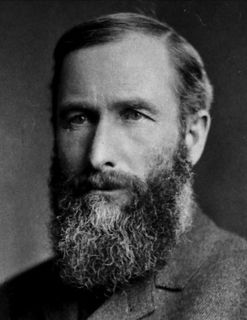
William John Murphy was an American businessman, contractor, land developer and founder of the Arizona Improvement Company. He is also remembered as the "Founder of Glendale, Arizona" and an important contributor to much of the early development in the Phoenix area.

The Glendale Memorial Park Cemetery is a historic cemetery located at 7844 North 61st Avenue in Glendale, Arizona. The cemetery was originally called Glendale Memorial Park. It is the final resting place of various notable early citizens of Glendale. Among those who are interred in the cemetery are early pioneers, mayors, businessman and veterans who fought in every military conflict in which the United States has been involved starting from the American Civil War onward. Also, in the cemetery there is a memorial and 16 graves of immigrant farmers who perished in 1959, in a bus accident on Central Avenue.

The Warm Springs Avenue Historic District in Boise, Idaho, is a residential area with 96 contributing houses representing a variety of architectural styles constructed between 1870 and 1940. The district includes Queen Anne, Colonial Revival, Tudor Revival, Bungalow, and other styles representing the work of architects Tourtellotte & Hummel, Wayland & Fennell, Kirtland Cutter, and others. The Children's Home Society of Idaho occupies the largest structure in the district, and its buildings are the only structures that are not houses.





